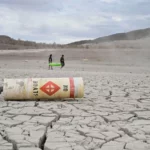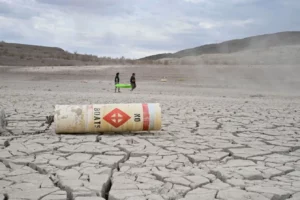Part of the roof of the tunnel collapsed on November 12, trapping 41 workers, who are expected to be rescued this weekend.
New Delhi: The under-construction tunnel from Silkyara to Barkot comes under the 880-km Char Dham project or Char Dham Pariyojana which bypassed environment impact assessment (EIA) after the project was divided in to several sdtretches that were small enough to not warrant EIA or environmental clearance.Experts said that if an EIA had been conducted for the project, there would have been a disaster management plan in place and it would have helped decide if the location was safe for constructing such a tunnel.
Part of the roof of the tunnel collapsed on November 12, trapping 41 workers, who are expected to be rescued this weekend.
When asked whether lack of EIA due to division of project in several stretches had an impact, state minister and in-charge minister of Uttarkashi district Prem Chand Aggarwal said all the issues will addressed after the rescue of 41 workers: “Our priority is the rescue of all trapped workers. We will look into these issues later.”
Citizens of Green Doon (CGD), a civil society organisation, moved NGT in 2018 pointing out that the highway project had not undergone an environmental impact assessment (EIA) and pleaded that its cumulative impact be assessed first. In an affidavit, the Union government told the National Green Tribunal in 2018 that only new national highways and expansion of highways longer than 100 km need prior environmental clearance under 2006 EIA notification. The Char Dham project was divided into several small stretches separated by 16 bypasses and was hence not required to seek such clearance. CGD moved the Supreme Court on this matter in 2019.
On December 14 last year, the Supreme Court permitted the Union government to construct all-weather roads with 10m width as part of its Char Dham project in Uttarakhand, underlining that “the recent past has thrown up serious challenges to national security”, and that wide strategic feeder roads to Indo-China border areas were required for the infrastructural needs of the armed forces.
In its report to the top court earlier, a high-powered committee on the matter was split on the issue, with a majority in favour of wider roads on the Char Dham route, considering the strategic requirement .
The Forest (Conservation) Amendment Act 2023 which will come into force on December 1, also exempts strategic national security projects on land situated within 100 km of international borders, Line of Control and Line of Actual Control, from environmental clearances. This, experts fear, could endanger sensitive ecosystems in the Western Himalayas and Northeast, where entire states could fall under the 100km exemption.
Several ecologists and geologists have raised concerns about the impact of hill cutting, muck disposal and instability that will be caused by a double lane paved shoulder (DLPS) category road; the Silkyara stretch has one such.
“The entire Char Dham pariyojana was a rushed job. In the process short cuts have been taken which violated the existing laws. The avoidance of an EIA was particularly harmful. Take the case of the Silkyara tunnel– had an EIA been done, there would have been a disaster management plan in place which is a mandatory part of an EIA. Bypassing of the law to assess environmental impact and absence of a disaster management plan has serious consequences. This could be considered as criminal neglect,” said Ravi Chopra, former chairman of a panel set up by the Supreme court to oversee widening of roads under the Char Dham Pariyojana and veteran environmentalist.
“The basic requirement was an environment impact assessment which we know has been bypassed in the Char Dham pariyojana .In the absence of an EIA there has been a complete negation of all the required environmental studies in the area. This is a very fragile zone, extremely rone to landslides. The double lane paved shoulder width is also of concern as you have already overburdened a vulnerable area. The Himalayan geology is also unpredictable and needs utmost caution before construction,” said Mallika Bhanot, member, Ganga Ahvaan.
Source : hindustantimes.com











Add Comment